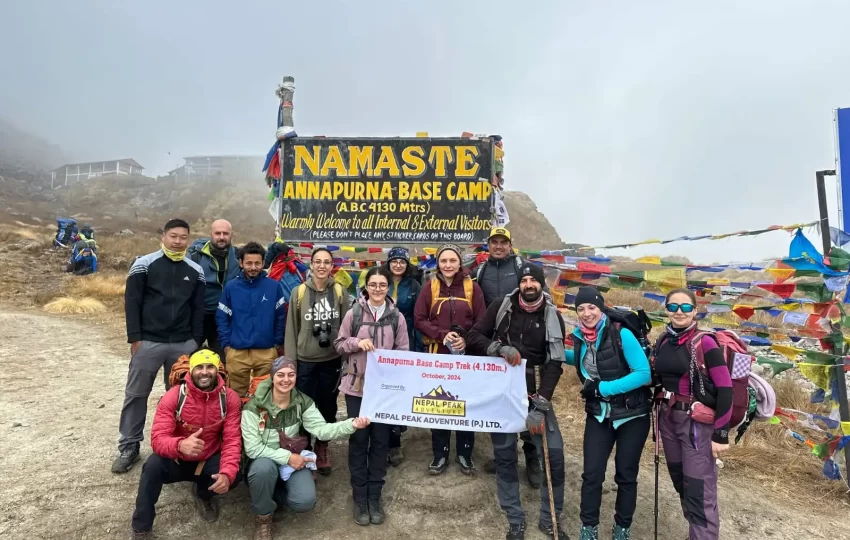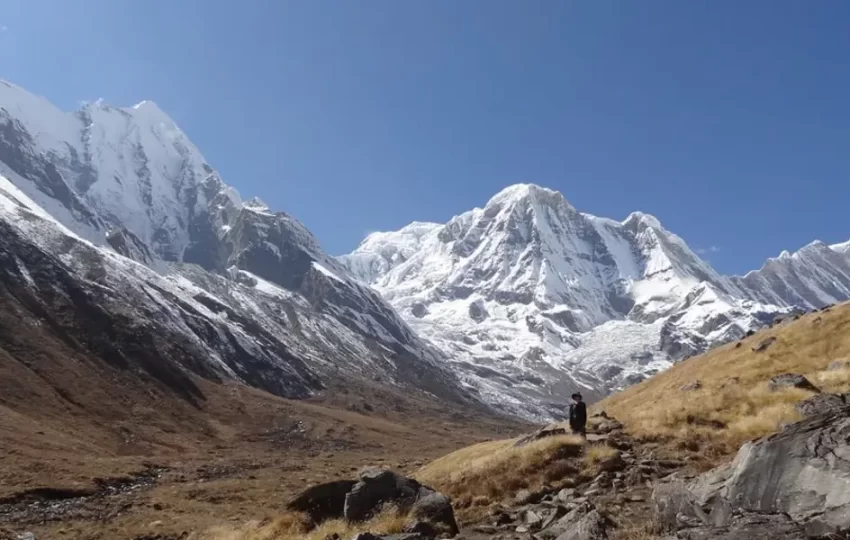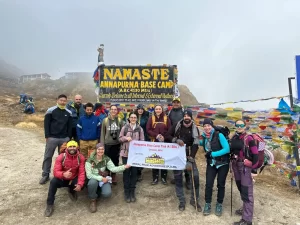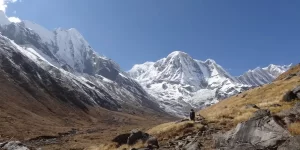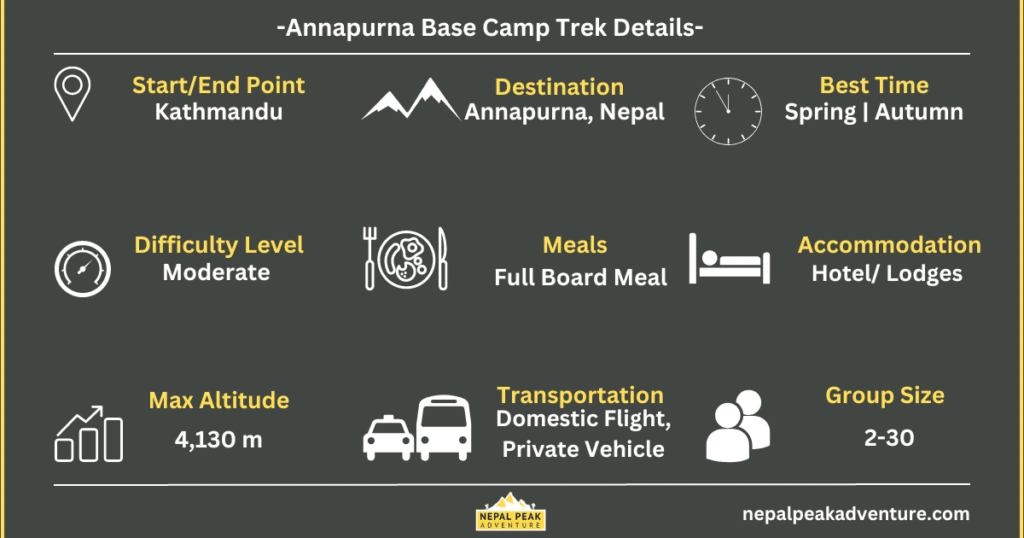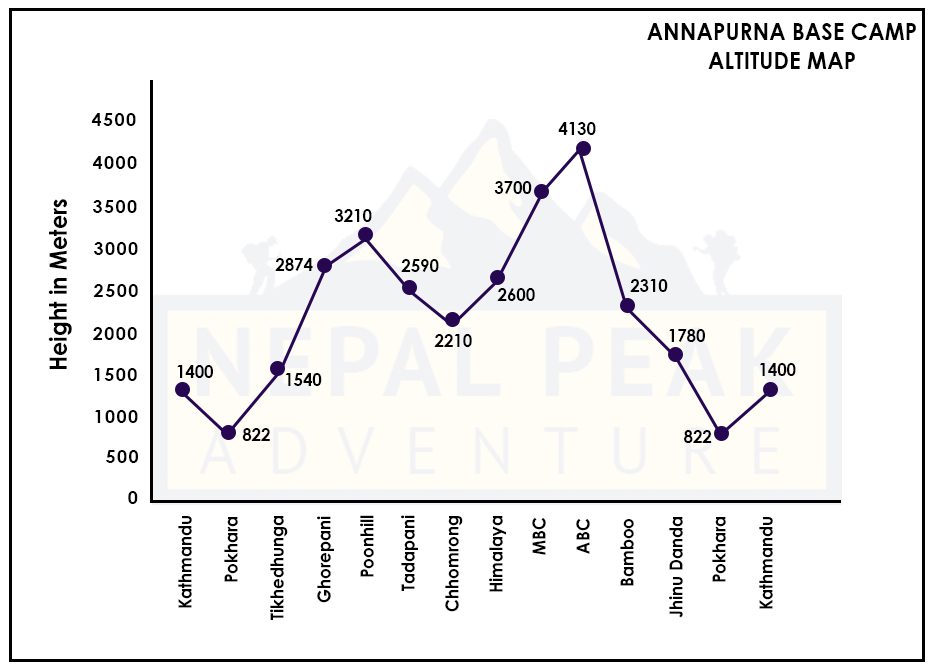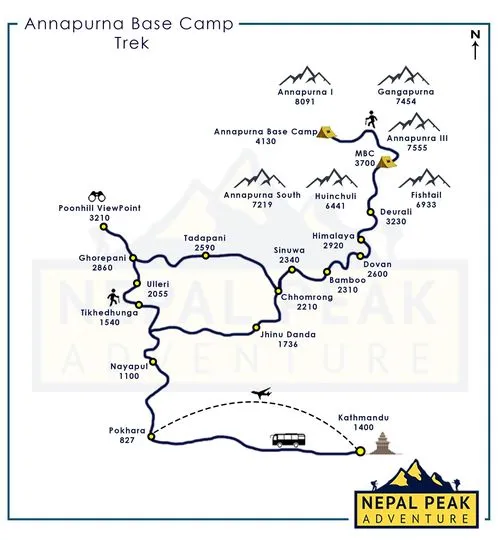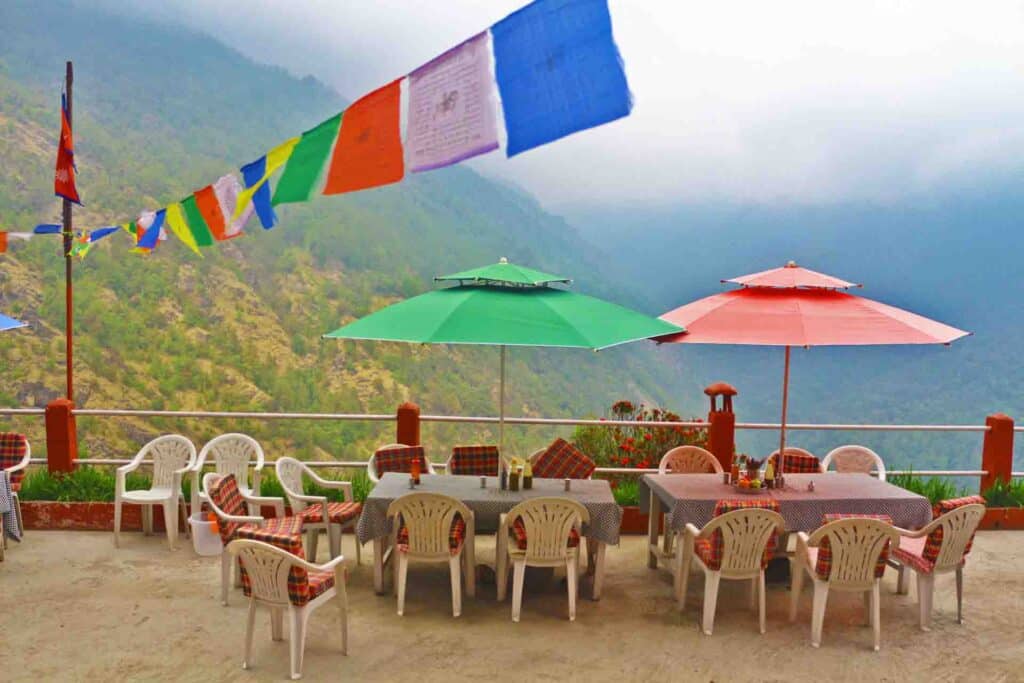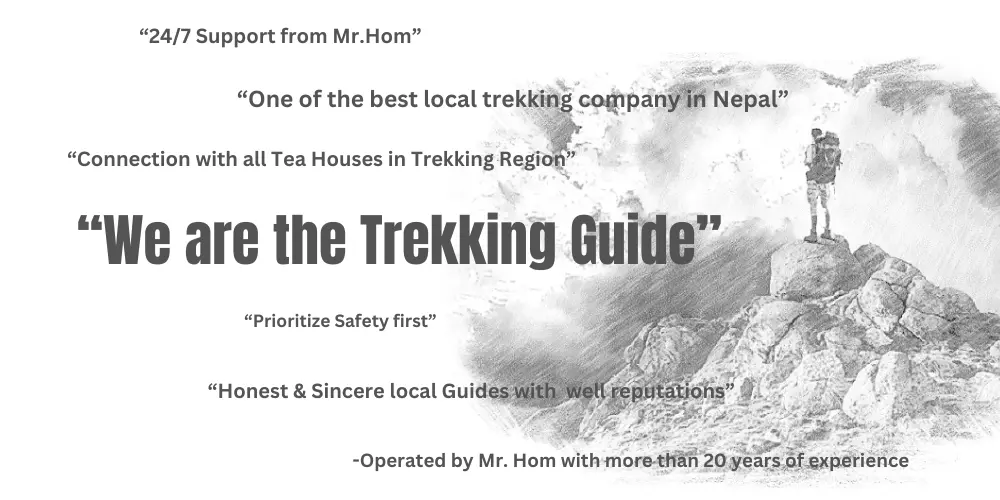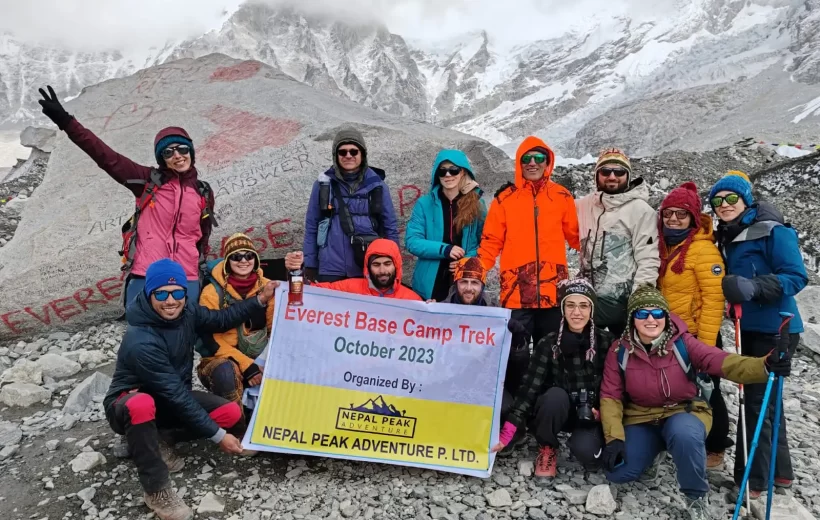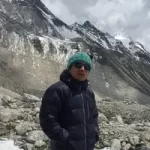Embark on a journey to the heart of the Himalayas, where towering peaks meet serene landscapes, offering an experience that truly nourishes the soul. The Annapurna Base Camp (ABC) Trek is more than just a hike; it's an immersive adventure into a "god-made heavenly world" , promising "actual peace and soul nourishment" amidst breathtaking natural beauty. This thrilling expedition takes you to the very lap of the majestic Annapurna Massif, offering "extraordinary views" and panoramic vistas that will leave you spellbound.
Our meticulously crafted package ensures a safe, comfortable, and unforgettable experience, allowing you to connect deeply with nature, immerse yourself in vibrant local cultures, and achieve a profound sense of accomplishment.
Key Features & Highlights
- Dual Trek Experience: Uniquely combines the iconic Annapurna Base Camp trek with the stunning Ghorepani Poon Hill trek, maximizing your Himalayan adventure in a single journey.
- Panoramic Mountain Views: Witness unparalleled 360-degree views of the Annapurna Range, including the sacred Fishtail Mountain (Machhapuchhre), Annapurna I (the 10th highest peak in the world), Annapurna South, Gangapurna, Glacier Dome, and more.
- Diverse Landscapes: Traverse through lush flame-red rhododendron and bamboo forests, cross massive hanging bridges, and marvel at cascading waterfalls.
- Wildlife Encounters: Keep an eye out for Himalayan Thar, Langur Monkeys, Musk Deer, Snow Leopards, and a variety of bird species in their natural habitat.
- Cultural Immersion: Experience the warm hospitality and rich traditions of the Gurung and Magar communities in charming villages like Ghandruk, Chhomrong, and Jhinu.
- Sunrise & Sunset Spectacles: Be captivated by the magical sunrise and sunset views over the Annapurna and Dhaulagiri mountains from Poon Hill.
- Natural Hot Springs: Rejuvenate your tired muscles in the soothing natural hot springs at Jhinu Danda, a perfect post-trek relaxation.
- Moderate Difficulty: Classified as a moderately difficult trek, it is suitable for beginners with a good fitness level, offering a rewarding challenge without extreme demands.
- Maximum Elevation: Reach the awe-inspiring Annapurna Base Camp at 4,130 meters (13,549 feet) above sea level.
Services Included in Annapurna Base Camp Package:
The Annapurna Base Camp Package offers a comprehensive range of services that are meticulously designed to ensure a seamless and unforgettable trekking experience in the Himalayas. From handling essential permits and airport transfers to providing comfortable accommodations and nutritious meals, every aspect of your ABC trekking is expertly taken care of. Below are the services included in this exceptional package:
- Tribhuvan Airport pick-up and airport drop service in a private vehicle
- Welcome dinner in a reputed Nepalese Restaurant with a live cultural program
- Twin-sharing accommodation in Kathmandu (2 nights) and Pokhara (2 nights) at a tourist standard hotel along with Breakfast service
- Standard Accommodation services during trekking in a teahouse/Lodge
- All three meals served on the trek (breakfast, lunch, dinner)
- Seasonal Fruits as a Dessert served after dinner during the trek
- Hot Tea/coffee (3 times a day) during the trek on every meal
- Tourist coach drives to and from Pokhara (air ticket or private vehicle can be arranged on the client’s behalf upon request)
- Government certified English speaking Trekking guide
- The entire cost of the staff members involved in the trek (their salary, insurance, equipment, food, and accommodation)
- Porters (one porter for every two trekkers) and his Entire expenses (salary, food, accommodation equipment, and insurance)
- Charges of all necessary documentation
- All Permits (Annapurna Conservation Area perm, Trekkers Information Management Systems (TIMS) Card)
- Down jackets and sleeping bags (upon request), should be returned to the company after completion of the trek.
- Company’s duffel bag, and a company t-shirt as a souvenir.
- Trekking route map
- First Aid Kit (carried by a trekking guide)
- Certificate of Trek Completion
- The arrangement of helicopter rescue service (trekker’s travel insurance must cover this expense)
- All applicable federal and local taxes.
- Farewell Dinner
- Final Departure Transfer Service
Cost Exclusion:
- Nepal visa and International flight fare.
- Dinner and Lunch in Kathmandu and Pokhara besides welcome and farewell dinner.
- Expenses for your clothing and personal gear
- Your personal equipment and other expenses such as mineral water, soft beverages, laundry, hot drinking water on the trek, bar bills, showers, internet, battery chargers, etc.
- Your travel insurance covers helicopter evacuation as well as medical expenses and trip cancellation
- Tipping to the guide, porter, and drivers
- Any other expenses not itemized in the "What is Included in the Trip cost? " are your personal expenses.
Outline Itinerary of Annapurna Base Camp Trek:
- Day 01: Airport Pick-up From Tribhuvan International Airport upon arrival (1400m)
- Day 02: Drive to Pokhara via Tourist Coach Vehicle | 5-6 hours drive
- Day 03: Drive to Nayapul and Trek to Tikhedhunga (1540m)
- Day 04: Trek to Ghorepani (2874m)
- Day 05: Hike to Poonhill (3210m) for Sunrise View and Trek to Tadapani (2590m)
- Day 06: Trek to Chhomrong (2210m) village
- Day 07: Trek to Himalaya Hotel (2600m)
- Day 08: Trek to Annapurna Base Camp (4130m) through MBC (Macchapucchre Base Camp) (3700m)
- Day 09: Trek to Bamboo (2310m)
- Day 10: Trek to Jhinu Danda (1780m)
- Day 11: Trek to Nayapul (1100 m) and drive to Pokhara (827m)
- Day 12: Drive to Kathmandu(1400m)
- Day 13: Departure from Kathmandu (1400m)
Trek Facts & Difficulty
- Max Elevation: 4,130 meters (13,549 feet) at Annapurna Base Camp.
- Duration: 13 Days (trekking portion). Customizable options are available.
- Grade: Moderate. Suitable for trekkers of all ages with or without previous high-altitude experience.
- Daily Activity: Expect to trek for 5 to 6 hours each day on average.
- Physical Fitness: A basic fitness level, good stamina, and determination are required. We recommend regular cardio exercises like walking, hiking, or cycling for 2-3 months prior to your trek to prepare for the varied terrain, including steep ascents and descents, stone staircases, and rocky paths.
Outline Map & Altitude of Base Camp Trek:
Down below is the day-to-day destination starting from Kathmandu and the left side is the altitude level all the way to 4,500m of the Annapurna Base Camp trek.
Annapurna Base Camp Trek Map
The Annapurna Base Camp Trek Map showcases the Annapurna trekking route from day first to last.
This extraordinary Annapurna trek route begins with a scenic drive to Pokhara, followed by a drive to Nayapul, the starting point of our trek. As we set foot on the trail, we traverse through charming villages and lush forests, gradually ascending to Tikhedhunga (1,540m) and Ghorepani (2,874m).
An essential part of the Annapurna trekking route is the hike to Poonhill (3,210m), a vantage point that treats you to a mesmerizing sunrise view of the Himalayan peaks. Continuing our trek, we venture towards Tadapani (2,590m), offering captivating views of the surrounding landscapes.
En route, we explore the picturesque village of Chhomrong (2,210m) before making our way to Himalaya Hotel (2,600m). The journey then leads us to the crown jewel of the trek, the Annapurna Base Camp (4,130m), via Macchapucchre Base Camp (MBC) at 3,700 meters.
As we journey back, the Annapurna Base Camp trek route takes us through Bamboo (2,310m) and Jhinu Danda (1,780m), where you can indulge in a well-deserved rest and enjoy the natural hot springs.
The final phase of the trek involves descending to Nayapul (1,100m) and driving back to Pokhara, where you can relish the tranquil beauty of Phewa Lake and the surrounding scenery.
Throughout the Annapurna Base Camp trek route, our experienced guides and porters will accompany you, ensuring your safety and comfort. Get ready to create indelible memories amidst the awe-inspiring landscapes of the Annapurna region on this unforgettable trekking adventure.
Note: Also, we have a Short Annapurna Base Camp Package for those who are short on time or don't want to take this 13 days itinerary.
Best Time to Trek
The Annapurna Base Camp trek is best experienced during two primary seasons, offering optimal weather and stunning views:
- Spring (March to May): This period offers clear skies, moderate temperatures, and the spectacular sight of rhododendron forests in full bloom, painting the hillsides in vibrant colors.
- Autumn (September to November): Characterized by clear visibility, stable weather, and comfortable temperatures, autumn is another highly recommended time for trekking, providing crisp mountain views.
While feasible, winter (December to February) can be very cold with snow at higher altitudes, requiring proper gear. Summer (June to August) is the monsoon season, which can make trails slippery and obscure views due to rain.
Accommodation & Meals
During your trek, you will be staying in traditional "Teahouses". These are basic but comfortable lodges run by local families, offering a unique cultural experience.
- Accommodation: Rooms typically vary from twin/double rooms to beds in a dormitory, especially as you ascend to higher altitudes where options are more limited. Mattresses are usually firm.
- Facilities: While some lower altitude teahouses might offer attached bathrooms, expect common toilet/bathroom facilities after Chhomrong as you gain elevation.
- Meals: Our package includes 8 breakfasts, 8 lunches, and 7 dinners during the trekking days. Teahouses offer a variety of Nepali and international dishes, including local staples like Dal Bhat (lentil soup with rice and vegetables), noodles, and soups.
Safety & Preparation
Your safety is our utmost priority. While the ABC trek is considered "beginner-friendly" compared to Everest , it's essential to be prepared for high-altitude trekking.
- Altitude Sickness (AMS) Prevention: Risks of altitude sickness exist above 2,500 meters (8,202 feet). To mitigate these risks, our itinerary includes a proper acclimatization schedule. We strongly advise you to:
- Get enough rest.
- Drink at least two liters of water and other fluids (like soups, ginger honey tea) daily to stay hydrated.
- Ascend slowly and do not rush.
- Listen to your body and communicate any discomfort to your guide immediately.
- Be aware of early signs of AMS, such as vomiting, headache, insomnia, difficulty breathing, nausea, and appetite loss.
- Experienced Support: You will be accompanied by experienced, government-licensed trek guides and strong porters (one porter for every two guests). All their expenses, including insurance, transportation, and food, are covered.
- Emergency Protocols: Our guides are trained in first aid and equipped to handle emergencies, ensuring a "completely safe and peaceful journey".
Recommended Packing List:
-
- Clothing: Use synthetic or wool clothing that wicks moisture away; avoid cotton, jeans, and cotton t-shirts. Include lightweight trekking pants, quick-drying trekking t-shirts, and a good layering system.
- Footwear: Worn-in trekking boots and multiple pairs of trekking socks are crucial.
- Essentials: Sunblock (SPF 50+), lip salve with sunblock, toilet paper, wet wipes/baby wipes, headlamp/torch with spare batteries, and gloves with inner lining.
- Gear Testing: Crucially, "test new gear before heading out on a trip" to prevent unexpected issues in the wilderness.
Quick FAQ about Annapurna Base Camp Trek:
Best time to visit Annapurna Base Camp Trek
The best time to go for the Annapurna trek is in Spring (March-May) and Autumn (Oct-Nov) seasons. These two seasons are considered the best trekking season in Nepal.
Trekking in spring, you will be mesmerized by the picturesque views of blooming rhododendron forests throughout the trail. Additionally, you will pass through the lively settlements of the Magar and Gurung tribes all the way. The days are warm and the sky is clear in the spring, allowing for stunning mountain views.
The Autumn season is the busiest trekking season in Nepal. This season starts after the monsoon which means all the dust and pollution are washed away and the atmosphere is amazingly clear. You can get a crystal clear view at day and night time too. You will experience fine weather with very stable temperatures.
However, the Annapurna Base Camp trek is possible in Monsoon (June-August) and Winter (Dec-Feb) too. You just need extra preparations and a mindset. Frequent rainfall and muddy trails are common in monsoons whereas cold temperatures and frozen trails in winter. You can certainly complete the Annapurna Base Camp trek during the off-season too if you can overcome all these hurdles.
Note: NPA can arrange and organize the ABC trek throughout the year.
What should I pack for the Annapurna Base Camp Trek?
When it comes to Annapurna Base Camp Trek you don’t need to pack a ton of clothes and trekking gear. A few pairs of clothes including jackets and trousers to keep you warm during the night time along with trekking poles, glasses, and comfortable boots is enough to pack for the ABC trek. And remember you don’t need to spend fancy for these items. You can rent or purchase everything you need in Thamel.
Things we recommend to pack for the Annapurna Base Camp trek are:
- 20-25 ltr daypack
- Hat
- Sunglass
- Gloves
- Long-sleeve T-shirts: 2-4 pairs
- Normal/Thermal Underwear: 2-3 pairs
- Bra: 2-3 pairs
- Down Jacket: 1 pair
- Normal Jacket: 1-2 pairs
- Trekking Pants: 2-3 pairs
- Hiking Boots: 1 pair
- Woolen Socks: 2-3 pairs
- Sleeping Bag
- First Aid Kit, Toiletries, and other necessary items
Note: These are the basic items you need to pack for the trek in general. However, you can add or remove stuff as per your needs. And always try to make your backpack as light as possible. Don’t bring unnecessary gear and items.
How much is the Annapurna Base Camp Trek Cost?
With our Annapurna Base Camp trek cost of USD $950 per person, you can rest assured that you are getting excellent value for your money, as we spare no effort to make this journey an extraordinary and rewarding experience for you.
Our comprehensive Annapurna Base Camp trek cost covers all essential services, permits, and amenities. From the moment you arrive in Nepal, we take care of your airport transfers and provide transportation to Pokhara, the starting point of the trek.
Throughout the journey, comfortable accommodation in tea houses or lodges is arranged, along with delicious and nutritious meals to keep you energized. Our experienced trekking guides and dedicated porters will accompany you throughout the trek, sharing their knowledge and expertise, while also carrying your main luggage, allowing you to enjoy the trek with a lighter daypack.
What kind of food and lodging should I expect on the Annapurna Trek?
Annapurna Base Camp trail offers you one of the best food and lodging experiences during the whole trek. Hotels in this region have decent enough rooms to keep your stay cozy and comfortable except on the base camp. There are only a few lodges on the base camp and on top of that, it is extremely cold at night. So, our company provides you with sleeping bags during this trek.
The food in Annapurna Trek is pretty good and delicious. Unlike in the Everest region, the food here is easily assessable and they are comparatively cheap and fresh too. Yes, you can enjoy the non-veg meals during the trek but after the Sinuwa village meat is not allowed till the base camp. However, you can enjoy the dishes with eggs, cheese, and even tuna items.
Note: We offer two-night stays in Kathmandu and Pokhara at a standard hotel on the basis of twins sharing breakfast. On the trek, you will spend eight nights in cozy hotels and lodges.
We provide full board meals (breakfast, lunch, and dinner) with tea or coffee in every meal. You will have options to choose food items from the hotel/lodge menus where we will be spending the night at.
How difficult is Annapurna Base Camp Trek?
Annapurna Base Camp Trekking is considered to be an easy to moderate-level trek. Because the maximum altitude you will gain during the trek is 4,130m which is Annapurna Base Camp itself. Otherwise, most of the time you will be hiking at a lower altitude below 3000m.
The Annapurna trekking trail is not so steep and rugged. On average you have to walk 4-6 hours a day. So, it can be a bit difficult for a beginner without prior training and preparations.
Hence, we recommend you exercise for a month or so before doing this trek. Cardio activities like running, swimming, cycling, and doing yoga to improve your breathing should be good enough to prepare for the trek.
